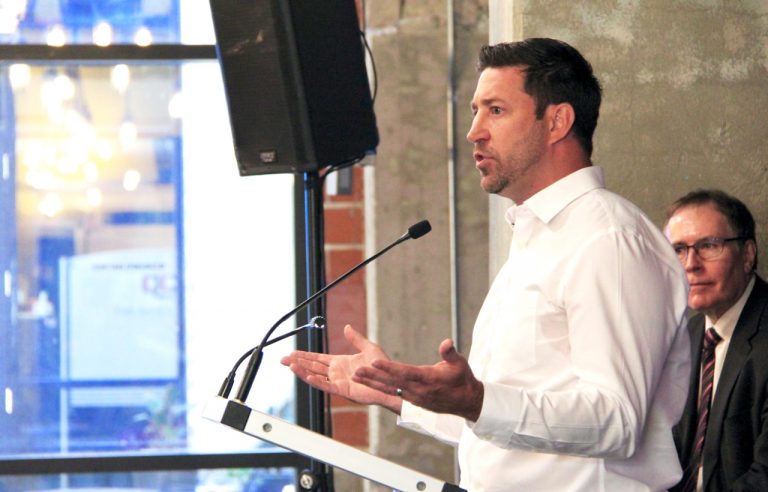The ongoing quest to build Waterloo Region’s next generation of high-growth tech companies received a $9.7-million boost from the federal government today.
Three local Members of Parliament – Gary Goodyear, Minister of State (Federal Economic Development Agency for Southern Ontario), Stephen Woodworth (Kitchener Centre) and Peter Braid (Kitchener-Waterloo) – were at the Communitech Hub to announce the funding, made under the Canada Accelerator and Incubator Program (CAIP).
Communitech, along with partners at the University of Waterloo’s Velocity program, Wilfrid Laurier University’s Laurier LaunchPad, and the Accelerator Centre, will deploy the funding over five years to help small and mid-sized companies as they progress beyond the startup phase.
“At the end of the day, we know that to be a successful region, we need to grow $100-million [in annual revenue] companies,” said Steve Currie, Communitech’s Vice-President of Strategy.
“A lot of research has shown that if you can create those companies, it has huge economic benefit for the region,” Currie said. “This program is specifically targeting how we can grow these companies from a few million to $100 million, and really have a maximum impact on the region.”
That same figure, $100 million, is the amount the federal government allocated to CAIP in 2013. Since then, 15 incubators and accelerators have received funding under the program. Prime Minister Stephen Harper named Communitech to a list of recipient organizations during a visit to the Hub last year.
The $9.7 million for Waterloo Region “is a testament to the confidence that we have in Communitech and in the great work that has been accomplished here to date,” Woodworth told assembled guests.
Iain Klugman, CEO of Communitech, said many of the estimated 12,000 people who come through the Hub each year are curious about “how we make this magic happen” in Waterloo Region.
While there are many programs and services for aspiring tech entrepreneurs, Klugman said that magic boils down to the strength of partnerships between the organizations working to build the community.
“We talk about how each of us are partners who take responsibility for building organizations at a world-class level, and how each of us also takes responsibility for collaborating and working together to ensure that we don’t have overlap and duplication.”
Governments are also key partners in providing infrastructure and support “not just for science, but also for entrepreneurs” working to build great companies, Klugman said, “because that’s what this is all about.”

Jim Moss benefited from the Laurier LaunchPad, Communitech and the Accelerator Centre
as he helped build Plasticity Labs into a high-potential growth-stage company.
(Communitech photo: Anthony Reinhart)
One such entrepreneur is Jim Moss, co-founder of Plasticity Labs, who took to the podium to talk about how his company has benefited from these local partnerships.
“These kinds of announcements are incredibly relevant to a company like ours,” said Moss, whose company measures and improves workplace happiness. “We’ve actually benefited from spending time with three of the four” partnering agencies involved in the local CAIP funding, he said.
The Laurier LaunchPad and Communitech were early mentors for the company, which went on to participate in Communitech’s HYPERDRIVE accelerator (it has since been redesigned as Rev), and the Accelerator Program through Waterloo’s Accelerator Centre.
Plasticity, now two and a half years old, is poised to raise another $3 million in capital after raising an initial $2.5 million; is aiming to hit $5 million in revenue next year; and is about to expand its offering into the United States and beyond.
“We have plans to hire as many as 24 employees, and we have every intention of staying right here in Waterloo Region,” Moss said. “I’m fundraising right at this very time, and investors shine a really bright light on the fact that we’re from Waterloo Region, because they believe we’ve got the support that we need to take our business from a startup, to a scale-up, and then ideally to be a stay-up at the end of the day.”

